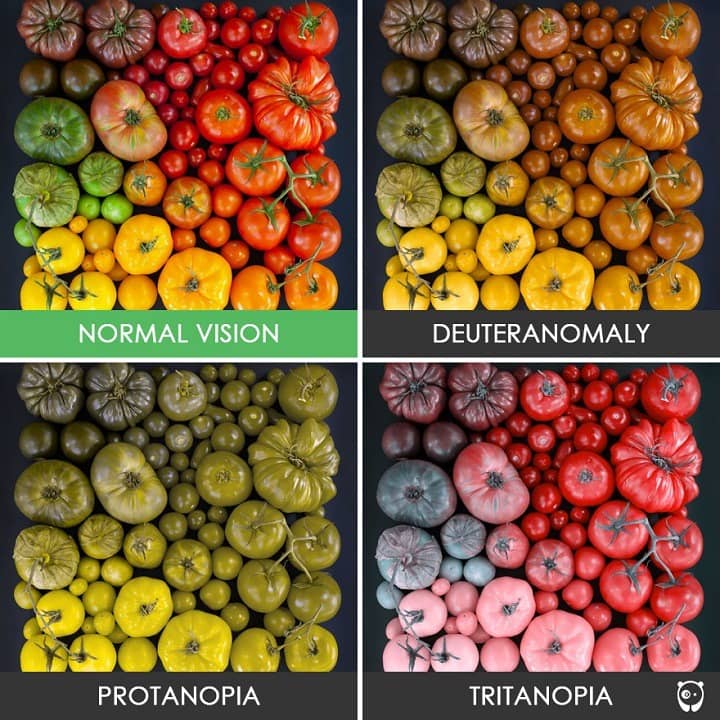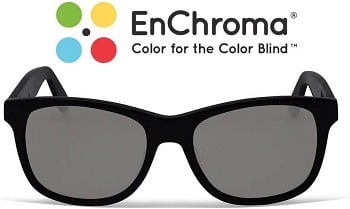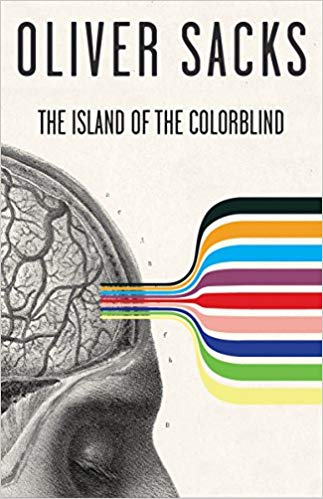When Will There Ever be a Cure for Color Blindness?
Table of contents

Our first job is to write insightful articles about investing in disruptive technologies for our large audience of lovely readers, and we spend most of our time making that happen. Our second job is trying to better understand our audience so we can gently nudge them towards products we trust which helps us feed our MBAs. (It’s kind of hard to keep churning out free insights when you can’t afford to buy lunch at Shake Shack.) As part of that whole Know Your Customer (KYC) exercise, we took a peek at our audience demographics for 2018 and the verdict is in. Nanalyze has three times more male readers than female readers.
Color Blindness in Males
This is where some people might start wringing their hands and talking about some “problem” that needs solving. Not us. We could care less if we’re only read by Ethiopian goat herding hermaphrodites, just as long as they’re wealthy and influential so that our advertisers are willing to pay us a premium for running ads on our site.
Because we know that 75% of you are male, we can then calculate the odds of an average reader being colorblind at around 6.35%. That number is actually pretty high, and there’s a reason for that. Incredibly, males are 25 times more likely to be colorblind than females because of a silly little thing called the X chromosome. What is color blindness? The simplest way to describe it is that people with typical color vision can see up to 10 million distinct colors while those with color blindness see only about 10% of those colors. Bausch & Lomb further describes the condition as follows:
Color blindness is a genetic condition caused by a difference in how one or more of the light-sensitive cells found in the retina of the eye respond to certain colors. These cells, called cones, sense wavelengths of light, and enable the retina to distinguish between colors. This difference in sensitivity in one or more cones can make a person color blind.
If you think you might be color blind but you don’t know, here’s a quick test. In each of the below pictures, there are lines you should be able to trace.

If you can’t see the lines in all of the images, you probably have a form of color blindness.
What Causes Color Blindness?
The vast majority of people with a color vision deficiency have inherited the condition from their mothers. (There are various conditions that can cause color blindness in people who used to see normally, but these are a minority of cases.) As you may already be thinking, we can’t just paint the entire population of color blind people with the same brush in much the same way we can’t refer to half the world’s population as “Asians,” or say that all autistic people are the same.
According to information we cobbled together from sources that included Colour Blind Awareness and EnChroma, color blind people can be divided into the following four types:
- Proton Color Blindness (Common) – do not detect enough red and are too sensitive to greens, yellows, and oranges.
- Deutan Color Blindness (Very Common) – do not detect enough green and are too sensitive to yellows, oranges, and reds.
- Tritan Color Blindness (Very Rare) – causes confusion between blue versus green and red from purple.
- Monochromacy and Achromatopsia (Rare AF) – both of these conditions can result in the inability to see the majority of colors
And here is an example from Bored Panda which gives you an idea of what these conditions might be like, but we have absolutely no way of telling whether or not it’s accurate. When you think about it, who can really say what colors anyone sees? We just all identify a particular color by the same name because that’s what our parents told us to do.

Contrary to what some people may assume, only a very small group of people have a condition called monochromatism which only allows them to see black and white. The same is true for achromatopsia (a partial or total absence of color vision) which is an extremely rare congenital visual condition (1 in 30,000 to 80,000) except for one place in the world.
The tiny Pacific atoll of Pingelap in the Federated States of Micronesia was worked over by Typhoon Lengkeki in 1775 which created a founder effect resulting in over 10 percent of the island’s population having complete achromatopsia. You can read about it in a book that was published detailing this remarkable occurrence:
The islanders will be stoked to hear that, as of June 2017, there were four registered clinical trials for gene therapy in achromatopsia, of which three had commenced. While nerds like us find this stuff to be extremely fascinating, we don’t have a ton of readers from the Pacific Islands so we’re going to move on now.
Is There a Cure for Color Blindness?
There is no known cure for color blindness. Since the vast majority of cases are inherited, the ultimate way to cure it is through some good old fashioned gene editing at the germline. People seem open to the idea of curing disease this way, but quickly draw the line at curing stupid, so it’s hard to say what we end up doing with this newly found power. It’s probably safe to say that there won’t be this type of cure implemented anytime soon.
All you Americans out there might be interested in some daily pill which will sort you out, but that’s not happening anytime soon. Researchers at the University of Washington have claimed to use gene therapy to successfully cure color blindness in monkeys but that hasn’t progressed to human trials yet. There are companies out there selling glasses and custom made lenses for color blindness correction, but they can be expensive for many users. Researchers at the University of Birmingham are trying to solve this problem by developing a contact lens that may help people with color blindness simply by using a low-cost dye. However, the most popular product on the market for color blind people at the moment comes from a company called EnChroma.
EnChroma Glasses

The glasses come in a variety of styles and colors – but since you can’t see colors, you’ll need to buy two pairs if you want to see what each one looks like, then pick the one that suits you best. (EnChroma marketing people, you can have that one for free.)
Conclusion
When life gives you lemons, you gotta make some lemonade. At least there are some options that exist for color blind people, and there are a lot worse afflictions you can have. Some day when we finally give in and join the Chinese in creating designer babies so we can compete with them, we’ll have a cure for color blindness and all these problems will go away. Until then, at least a good number of color blind people can have some idea of what colors look like and decide if they’re missing out on anything. If you’re a company that’s working on a therapy (something that’s progressed to human trials preferably), or you have a product that competes with EnChroma, drop us a note. You can send us some free samples and we’ll give them a go on some of our human guinea pigs. Speaking of which.
One of our MBAs happens to be color blind, so we decided to get him a pair of EnChroma shades for wearing around the office. When they arrived, we turned on James and the Giant Peach and smoked a few joints of Purple Raine. There wasn’t any of that tearful hugging stuff, we all just sat back and laughed our asses off while he tripped out hard. If you’re color blind, we highly recommend this method of easing yourself into the world of color. Pick yourself up a pair of EnChroma glasses by clicking on this link and let the fun begin.

Sign up to our newsletter to get more of our great research delivered straight to your inbox!
Nanalyze Weekly includes useful insights written by our team of underpaid MBAs, research on new disruptive technology stocks flying under the radar, and summaries of our recent research. Always 100% free.















